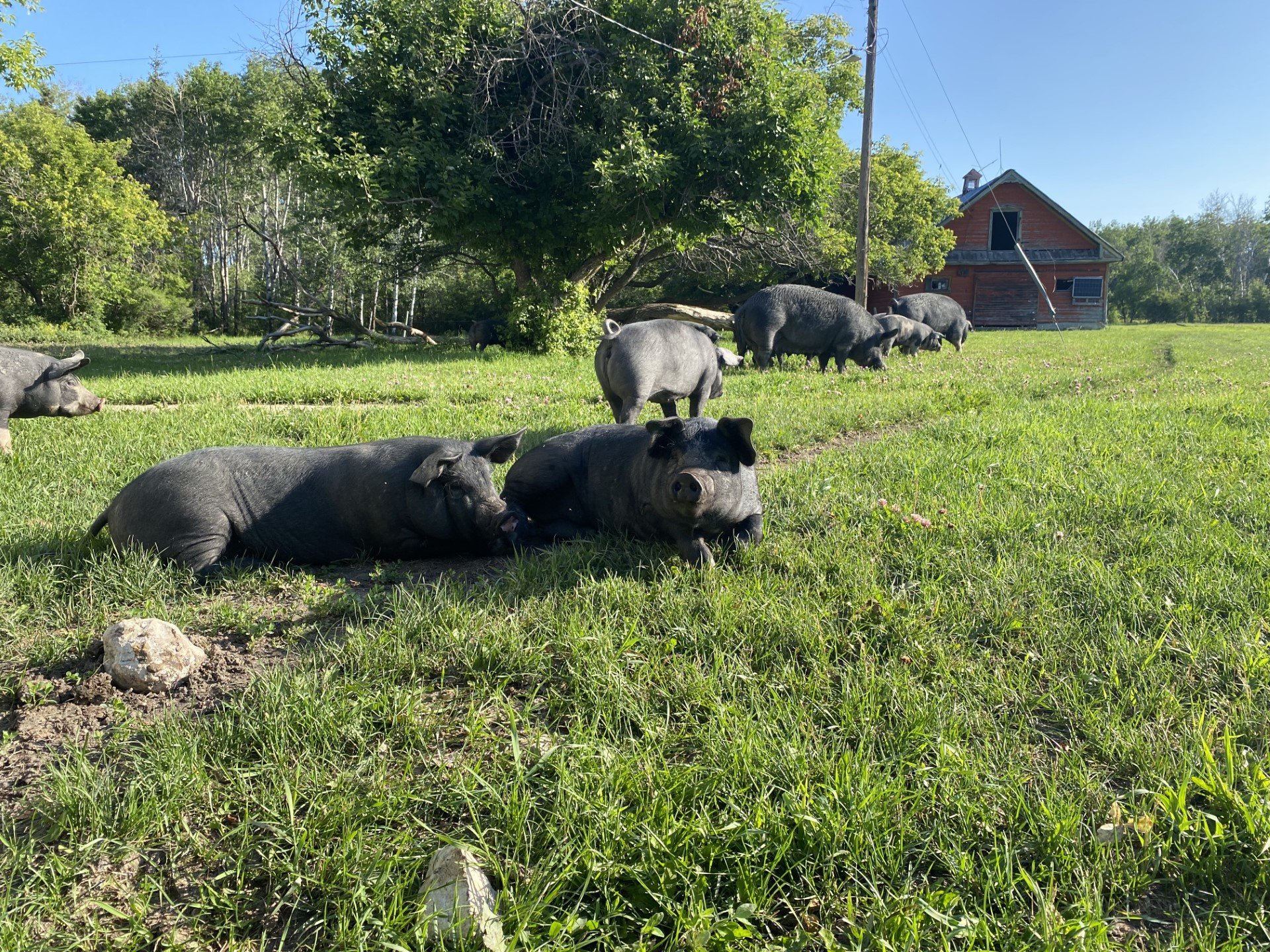Our Pork…
In early 2022, we introduced two pregnant berkshire sows, Ethel and Emma, and their male companion, Borris, to our farm. That spring we had our first sets of piglets. Emma and Ethel both farrowed around the spring equinox inside a barn that we refurbished. They were protected from the elements and the piglets could be kept warm. Piglets are aggressive baby animals and are fighting with their littermates for space at a teat mere seconds after birth. Interesting fact, piglets will almost always return to the same teat.
The piglets stay in the barn until they can thermal regulate (around 3 weeks of age) and then they go out onto pasture with their mothers. They remain together for majority of their time, letting the sows wean the piglets themselves when they choose to. We rotate them through various paddocks throughout the summer; these paddocks include grass areas, treed areas, and wet areas for wallowing; pigs do not sweat, so it is important for them to have wallows, shade and cool water during the hottest months.
Since then, we have built multiple paddocks, set up a farrowing barn at Howie and Heida’s, introduced new sows, are beginning to farrow multiple times per year to keep up with demand and learnt much about raising pastured pigs - and are still learning. With the first few years of farrowing in a barn, we observed the piglets not utilizing the heat lamp as much, but prefer to stay tucked up to their mom’s belly. So, in 2024 we let one of our new sows, Daisy, farrow outside in April. Lucky for us and her it was a beautiful spring day and she did a great job. Given the pigs desire to be outside and not in confinements, we’re attempting to keep them outside year-round.
As a monogastric, pigs are not designed to eat only grass, so we also provide them with grain that we mill ourselves on the farm. It is usually a mixture of oats, peas and hemp, although sometimes contain other grains that we come across, such as wheat, flax, or barley. We are committed to never using GMO grains in our ration. We also partner with our local grocery store to pick up food waste from their produce department. We get to divert this produce from landfills and provide our pigs with tasty treats. They absolutely adore cantaloupe, tomatoes and apples.
Because our pigs are raised differently than conventionally raised pork, the meat will be different. Most notably, our pork has more fat than the cuts you will find in the store. Of course, this lends to the delicious flavour of our pork. Pigs also store vitamin D in their fat, outdoor reared pork fat is supposed to be almost as good of a Vitamin D source as cod liver oil! Since ours get exposed to lots of sunshine, a few slices of bacon in our short winter days is arguably good for you. We have learnt that different breeds of pigs can be either "bacon pigs" or "lard pigs". Berkshire pork is touted to be of excellent quality and supposedly falls in the middle of this scale, leaning towards the lard end. Utilizing the fat from our pigs has been a fun project for us and we have been learning to render our own lard and make our own soap which you can now buy direct on our website. We’d be happy to pass along the “how-to” of these activities to anyone interested. We have been looking for some other heritage breeds that run a little leaner than the Berkshires to try and push our pork a little more towards the “bacon” end of the scale. We’ve now (Fall 2024) introduced 2 new sows that are more on the bacon end of the scale and less fatty. Our newest Gilt Tammy will hopefully be farrowing outside this spring. We can’t wait to see how she does and raise her little ones throughout the summer.
